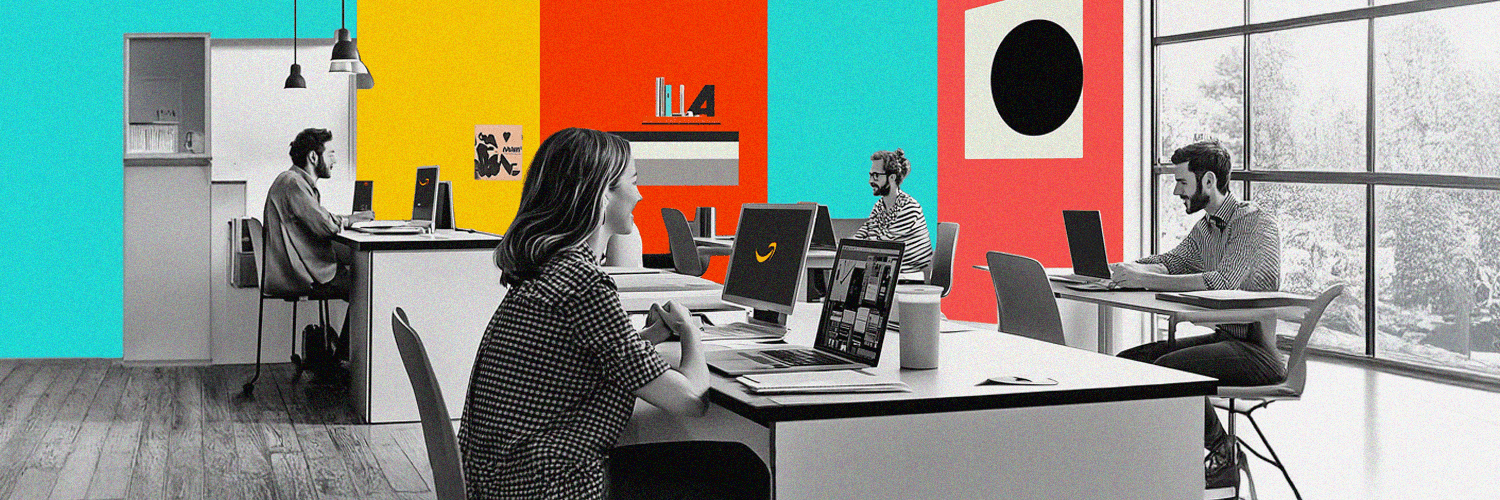First, there were lockdowns and work-from-home. Then, it was all about social distancing. And as the world woke up from the pandemic nightmare, "returning to work" seemed to be the new buzzword.
According to recent research, layoffs and the economic downturn have brought yet another surprising piece of data to the "remote vs hybrid vs in office" debate. More specifically, US employees are happier to spend 62% of their time in the office, to maximize individual and team productivity. Among the reasons most frequently cited as the catalysts of "returning to the office", people voted "focusing on my work," "access to technology," and "scheduled vs. in-person meetings."
This doesn't put a damper on the hybrid work narrative -- on the contrary, it comes to support the idea that, even two years after the "new normal" got downloaded in everyone's brains, there are certain aspects of work and productivity that still require an in-person presence.
Saying is easier than done, though -- so it's no surprise that the same research suggests that companies and employees alike are still trying to figure out the best way to make both of them happy.
We thought no one in the whole wide world is better equipped with the know-how on how to "return to work" than people who've already done it. So we went around and asked them: what were the things that worked for them, what were the things that didn't? How did they manage to pull it off efficiently?
Here's what we learned.

Start Slow, Go Steady
"I would say that if you switch from two years of remote work to a five-day in-office requirement, you run the risk of alienating employees and losing talent. After all, not everyone enjoys or readily accepts change. After conducting an employee survey and gaining an understanding of their issues, you may wish to implement your return to office policy gradually. For instance, if the objective is to have everyone in the workplace three days per week, begin by asking employees to return for two days and then increase it after a few months, when people are acclimated."
– Adam Wood, Co-Founder of RevenueGeeks
Show Empathy
"As a business owner and CEO, it was imperative that I understood the situation that each and every team member in my company went through. The COVID-19 pandemic was a time of hardship, and surviving through it was an indication of perseverance by my team members. However, as we all returned to the office, the employees found and I, myself, found it hard to fit in the physical office environment. To make it easier for employees, we held frequent breaks in the first two months to make employees feel more comfortable working in the office environment.
This proved to be successful as it helped increase employee production and also helped lower stress on the team. I also implemented a hybrid system in the beginning to make it easier for employees to transition as the working environment changed and gradually reduced the online working hours. This proved to be less effective and made employees lose their focus due to constant change and decreased productivity, so it was not implemented after the first few months."
– Rhett Stubbendeck, CEO of LeverageRx
Put Emphasis on Flexible Scheduling
"One bad return to office practice we implemented was the one-size-fits-all approach. Initially, we required all employees to come back to the office at the same time, regardless of their personal situations. This caused a lot of stress and anxiety for some employees, who were not yet comfortable coming back.
To address this, we started having individual conversations with employees to understand their concerns and needs. From there, we created a personalized plan for each employee, which included a phased approach to returning to the office and other accommodations, such as personal protective equipment or special seating arrangements. This approach helped us better meet our employees' needs and made the return to the office smoother for everyone."
– Bonnie Whitfield, Human Resources Director of Family Destinations Guide
Here’s a guide you can use to learn more about flexible and hybrid scheduling.

Encourage Team Building
"Returning to the office after Covid was not going to be an easy transition, so we needed to figure out different ways to ease everyone back into in-office work. We put an emphasis on the social aspect and encouraged team projects and socialization.
Remote and hybrid work offers unmatched flexibility, but in-person work promotes team-building and social energy. We found that many employees missed interacting with their colleagues at the office, so we wanted to put an emphasis on that interaction so they felt excited about returning to in-person work.
We encourage team-building exercises as well as casual meetings where everyone can talk outside of the strictly professional realm. We have seen an uptick in professional relationships as well as more productive teams. When we work together as a team, we get more done and have a healthier workplace.”
– Mark Surprenant, General Manager at Bennett Packaging
Being a Source of Delight
"Finding ways to make the transition easier for others is one of the best ways to ease the transition. Engage in conversations that generate a sense of levity within your team. Inspiring and humorous tales can foster a new sense of community. Be considerate of those coworkers who are still working from home. They may begin to feel alienated or concerned that they are missing opportunities in person. Display sensitivity by taking additional measures to ensure they feel connected and included."
– Susan Melony , CMO at FreePeopleSearch
Stock Up on Patience and Flexibility
"Expect the protocols in place at your company to change over time. New information and changing conditions will require your company to adapt, sometimes through trial and error, and sometimes on the fly. Manage your expectations with patience and flexibility so that you don't become irritated or nervous whenever something changes.
Try not to see change as your organization not knowing what they're doing. Organizations that are open to learning and improvement, even if they must do so on the fly, are more often than not a good sign. Your brain will almost certainly continue to look for autopilot alternatives to familiar routines; you might be surprised at how quickly it creates new shortcuts. However, you must be careful not to become too comfortable."
– John Willis, Founder at Convertfree
Focus on the Social Benefits
"When we brought everyone back into the office, we focused on highlighting the value of being together in one setting for easier collaboration, better camaraderie, and increased productivity. We explained this to our employees and let them know that these were the reasons for returning to the office, which made the transition go much more smoothly. Our employees knew exactly why we were making the change, so it didn’t feel like it was forced or simply done arbitrarily, and there wasn’t any pushback because of this. By being open and transparent, employees were eager to return to the office because they could see the value in being together in person again."
– Logan Mallory, VP at Motivosity

Make Your Office Comfortable
"Providing well-equipped break rooms encourages workers to return to the office willingly. It offers them a comfortable space to recharge, reduce stress, and ultimately increase productivity. It also promotes a sense of community and fosters social interaction, boosting employee engagement and satisfaction.
Moreover, designating break rooms in the office promotes healthy habits among employees. This is especially true if you create a space that offers healthy snack options, provides access to fresh water, and allows workers to participate in recreational activities while on break. These reduce the risk of illness and burnout, allowing employees to feel more at home despite working in the office."
– Milo Cruz, CMO @ Freelance Writing Jobs
Read more about making your office space comfortable and productivity-oriented, here.
Make It Sustainable
"Implement sustainability initiatives to make the workspace effective for employees returning to the office. Besides reducing your company's carbon footprint, it also leads to increased employee engagement and satisfaction. This is so because employees tend to be more loyal to organizations prioritizing sustainability and social responsibility.
Enforce energy-saving measures to minimize the electricity bills in the office, like using LED lighting and smart thermostats. You can reinvest the amount of money you save to improve employee wellness programs and provide opportunities that contribute to their professional growth.
More importantly, championing sustainability promotes a culture of innovation among employees returning to the office. This encourages them to think creatively about reducing waste and conserving resources, eventually leading to a more engaged and empowered workforce."
– Sam Tabak, Board Member, Rabbi Meir Baal Haness Charities.
Need to learn more about office space sustainability? Here’s a guide that may help.
Conclusion
Is returning to the office easy?
No.
Is it impossible?
Also no.
As a workplace manager, HR, or team lead, returning to work also means you'll have to navigate what will seem like an ocean of distress, discomfort, and disorientation as your team adjusts to the changes. Yet, by leveraging strategies described in this article, you'll make it all easier -- both for yourself and your team.
Remember, returning to the office requires a great deal of forethought and preparation. It's essential that you plan it properly before your team comes back and that you keep a close eye on the situation. In the end, it's only through effective management and communication that your team will find the transition easier, and ultimately more successful.
%20(2)%20(1)-2.png)










